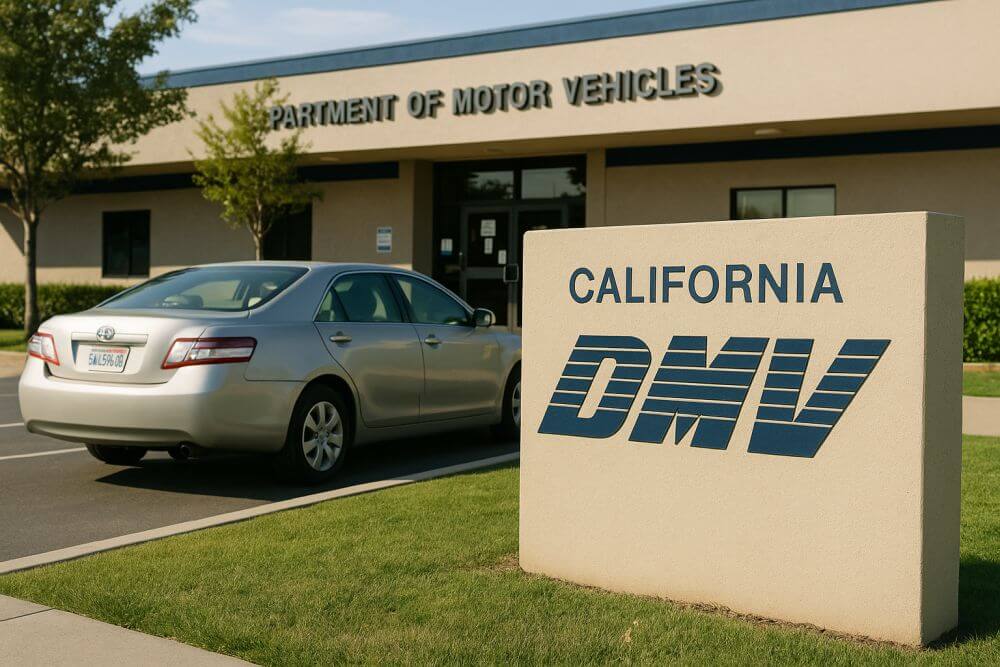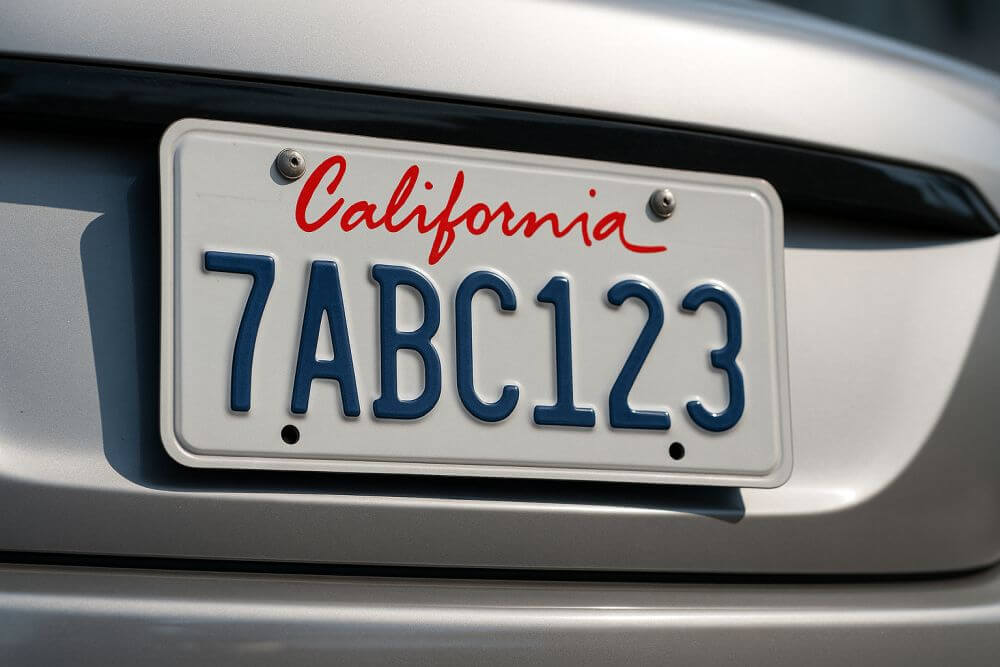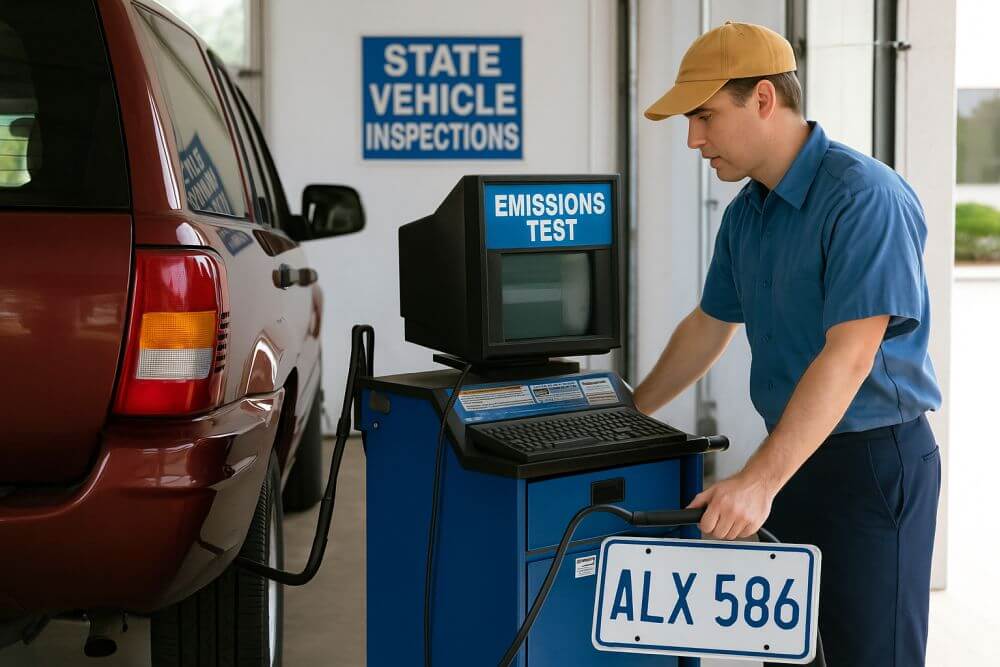Bringing a vehicle into California from another state? Whether you’re relocating, purchasing a car across state lines, or inheriting a vehicle from a family member, registering an out-of-state car in California involves more than just filling out a few DMV forms.
From emissions compliance to title verification and tax payment, the process requires attention to detail to avoid delays, penalties, or a rejected application.

In this guide, we’ll walk you through the full process — and explain why California VIN verification may be required during registration. You’ll also find useful resources for running a California VIN Check, California license plate lookup, and managing California vehicle registration.
Why Registering an Out-of-State Car Is Different in California
California is known for having some of the strictest vehicle regulations in the country, especially when it comes to emissions, title branding, and ownership documentation. If you’re bringing in a car from out of state, the California DMV treats it as a “new” vehicle in its system, even if it’s used.
Some of the unique requirements include:
- California smog compliance
- California VIN inspection
- Out-of-state title validation
- Tax calculation on vehicle value
- Use tax and registration fees
Step-by-Step: How to Register an Out-of-State Vehicle in California
1. Ensure the Vehicle Meets California Emissions Standards
Before you can register your vehicle, it must meet California Air Resources Board (CARB) emissions standards.
- If the car was manufactured for sale in California, it should have a CARB label under the hood.
- Federal-only emissions vehicles may not be registerable unless they qualify for exemption (e.g., military, family transfer, or classic cars over 25 years old).
- Newer out-of-state vehicles with less than 7,500 miles must be California-certified to be registered.
2. Get a Smog Check (If Required)
Most gasoline-powered vehicles over four years old must pass a California smog inspection before registration.
- Diesel vehicles (model year 1998 or newer) weighing under 14,000 lbs must also pass.
- Electric and hybrid vehicles may be exempt but should be checked for specific criteria.
You can locate a certified smog station in your area through the California Bureau of Automotive Repair.
3. Complete a California VIN Verification
One of the most important steps in registering an out-of-state car is the Vehicle Identification Number (VIN) verification. This process ensures that the VIN on your car matches the title and registration documents — and confirms that the vehicle isn’t stolen or altered.
California VIN verification may be required in the following cases:
- Any out-of-state vehicle being registered for the first time in CA
- Vehicles with salvage, rebuilt, or branded titles
- Cars with discrepancies in their documentation
A VIN verification can be completed by:
- A licensed California DMV employee
- A California Highway Patrol (CHP) officer
- A licensed mobile VIN verifier
To get a head start, run a free VIN check using the California VIN Check tool to uncover title history, previous branding, or liens that could affect your registration process.
4. Visit the DMV and Submit Required Documents
Once you’ve passed smog and completed VIN verification, you’ll need to visit a local DMV office with the following:
- Completed Application for Title or Registration (Form REG 343)
- Out-of-state Certificate of Title (or bill of sale if the title is unavailable)
- Proof of insurance meeting California minimum coverage
- Smog check certificate (if applicable)
- Odometer mileage reading (if vehicle is less than 10 years old)
- VIN Verification Form (REG 31), completed by the authorized verifier
- Payment for registration fees and taxes
Appointments are strongly recommended at most DMV locations.
5. Pay Registration Fees and Use Tax
California charges several fees when registering an out-of-state vehicle, including:
- Use Tax (based on the current value of the car)
- Registration Fee
- Title Transfer Fee
- Smog Abatement or Inspection Fee
- License Plate Fee (if new CA plates are issued)
You can calculate your estimated fees using the California DMV Fee Calculator available on their official site.
6. Receive Your California Plates, Title, and Stickers
Once you’ve completed the above steps and your documents are accepted, you’ll receive:
- California license plates (if required)
- A new California Certificate of Title
- Registration card and sticker
Use a California license plate lookup at any time to confirm your new registration status or verify a used vehicle already in the state.
What If I Recently Moved to California?
New residents are required to register their out-of-state vehicle within 20 days of establishing residency. Residency is defined by:
- Registering to vote
- Paying resident tuition
- Accepting employment
- Leasing/renting a residence
- Claiming homeowner’s property tax exemption
Delaying registration can lead to penalties and enforcement action, especially if caught driving with expired or out-of-state tags.
Tips for a Smooth Registration Process
- Start early: Some inspections (like CHP VIN checks) may take weeks to schedule.
- Use online tools: Run a VIN check before visiting the DMV to avoid surprises.
- Bring all documents: Missing one item can delay the process.
- Consider mobile VIN verification: This is faster than waiting for a DMV or CHP appointment.
- Check for recalls: Open recalls won’t block registration, but they may affect insurance or safety.
FAQs: Out-of-State Vehicle Registration in California
Can I register an out-of-state car in California without a smog check?
Only if the vehicle is exempt (electric, hybrid, less than four years old, or classic). Most others will require one.
Do I need California insurance before registering the car?
Yes. Proof of valid California insurance is mandatory before plates can be issued.
Can I drive the car while waiting for registration?
You can request a temporary operating permit from the DMV, but you must show proof that the process has begun.
What if I’m gifting a car from out-of-state to a California resident?
You’ll still need to complete VIN verification and smog certification. In some cases, gift transfers may reduce or waive use tax.
How long does the registration process take?
Once all documents are submitted, plates and registration are typically issued same day. However, titles may take 2–4 weeks by mail.
Final Thoughts
Registering an out-of-state car in California requires more paperwork and steps than in many other states — but it’s completely manageable with the right information and preparation.
To make the process smoother:
- Run a California VIN check to ensure the car’s history is clean.
- Use a California license plate lookup to confirm valid registration.
- Visit the California vehicle registration resource center for guidance on forms and fees.
With the right documents in hand and your inspections completed, you’ll be ready to hit the road — legally and confidently — in your newly registered California ride.


